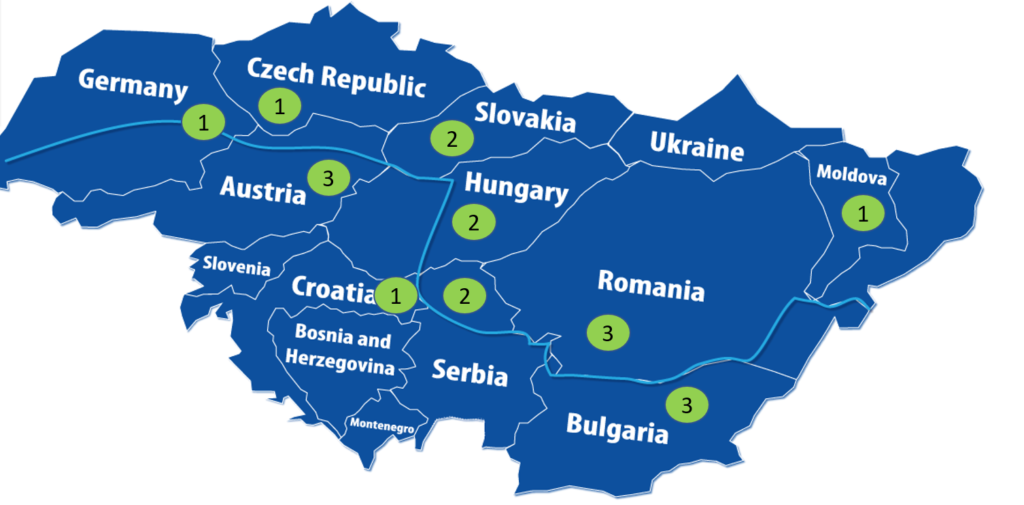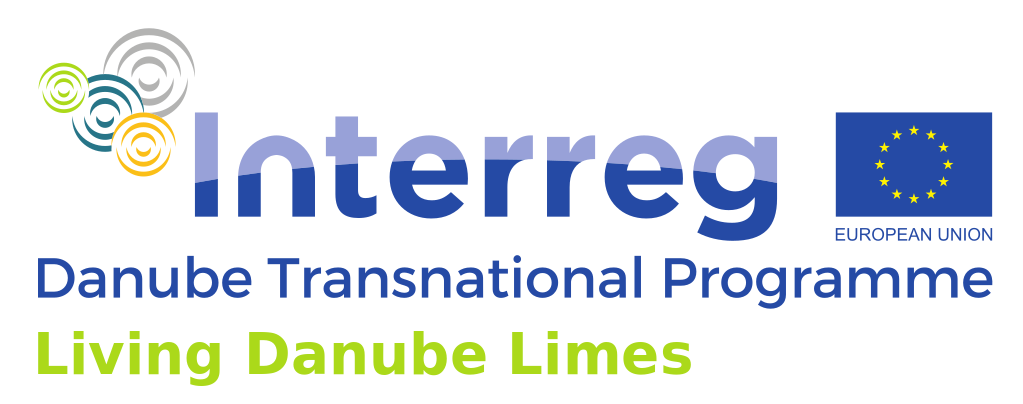The EU funded project “Living Danube Limes” which comprises partners from 10 Danube countries and sets out to implement a host of measures to protect the historic infrastructure and develop the touristic potential of the 2000 year old Roman heritage on the Danube, has started in July 2020. A special feature of the project will be the fully authentic reconstruction of a Roman Danube ship from the 4th century CE.
The project consort of “Living Danube Limes“ comprises 19 universities, state and private enterprises from 10 countries, as well as 27 associated strategic partners who support the project with capacities and competences in the fields of archaeology, ancient history, technology, architecture, virtual-reality, museum structures, tourism, cultural heritage protection and living-history. On behalf of BME, the Department of History of Architecture and Monument Preservation participates in the programme as a project partner, in cooperation with the Banner János Foundation of Archaeology and the Hungarian Society for Urban Planning as associated strategic partners. The project area spans from Germany to the Black Sea. The project runs from July 2020 until December 2022 and has a budget of 3.2 million Euros.

The participating countries of ’Living Danube Limes’ project.
After 2000 years, the Roman heritage is still present and visible along the entire Danube. The main capitals on the Danube all have a Roman past, but also many smaller towns and villages boast impressive Roman remains. However, many of these ruins are often not sufficiently excavated and are threatened by natural disasters such as floods. Lack of preservation efforts could mean permanent loss of important sites of one of the world’s largest historic frontier systems. The Danube Limes fascination is that it functioned both as a defensive frontier and as a most important trade route. In order to foster identification with the transnational heritage, the project seeks to highlight the cultural, symbolic and touristic value of the Danube Limes. The highly acclaimed Austrian Limes museum at Carnuntum will serve as blueprint for innovative museum and tourism concepts for the pilot sites to be created along the entire river. The prominent feature of Carnuntum is the spectacular, authentic and fully functional reconstruction of Roman buildings, which are hugely popular with visitors as well as the growing living-history scene, as they open up entirely new ways of interacting with the historic heritage.
Holistic measures to highlight transnational, European character of the Roman Danube Limes
“Living Danube Limes“ draws on predecessor EU projects such as “Danube Limes Brand“ and “DANUrB“, in order to maximize synergies and sustainability. Each Danube country will establish a pilot site, which will be the main focal point for the implementation of the project measures, which include archaeological geoprospection, sustainable tourism strategies, virtual-reality reconstructions, museum cooperation and events. The pilot sites will be screened with newest high precision geophysical scanners, in order to gain new knowledge. The acquired data will then be used to model virtual-reality reconstructions, which will be integrated into a Danube Limes App that will be freely available. The project also aims at developing the pilot sites into a chain of mutually complementary Limes centres, in order to strengthen tourism in the region. Experts on cultural heritage protection will compile strategies for the sustainable and lasting protection of the historic infrastructure along the Danube. Each pilot-site will also be paired with specifically raised high-quality living-history initiatives, which will literally re-enliven the Danube Limes and transmit knowledge and expertise to a wide array of audiences. A world premiere will be the reconstruction of a 4th century Roman Danube ship by entirely historic means and without the aid of modern tools, as an accompanying measure to the projects initiatives. The ship, complete with accurately equipped crew, will cruise on the Danube between the pilot sites from July 2022 to December 2022 and will then be displayed at each pilot site for a year from 2023 onwards.
3-D model of the historical roman boat (Lusoria type, 4th cent. AD) created by the Lehrstuhl Graphische Datenverarbeitung (FAU Erlangen-Nürnberg). This model shows two wrecks that function as a role model for the reconstruction which is here overlapping the wrecks. The data for the wrecks © is provided by the RGZM (Römisch-Germanisches Zentralmuseum, Mainz).
UNESCO World-Heritage nomination, European Cultural Route and sustainable tourism at the Danube Limes
One main objective of “Living Danube Limes“ is the nomination of the entire Danube Limes as UNESCO World Heritage site. The project specifically supports the submissions of Croatia, Serbia, Bulgaria and Romania, as these countries are not yet on the tentative list of UNESCO for their Limes sections. “Living Danube Limes“ also envisions the creation of a European Cultural Route, as well as the implementation of green tourism concepts.
Closing of research gaps, connection of museums and inclusion of the population
The research activities in “Living Danube Limes“ aim at closing research gaps around the Danube Limes. The research results will subsequently be disseminated by linking-up of museums in transnational museum clusters and by presenting the results through the “Living Danube Limes App”. The widest possible inclusion of the broad public into the work in “Living Danube Limes”, for example through living-history events, guarantees a strong interaction with the Roman Danube Limes, and thus a stronger identification with the shared heritage.
“Scientific Conference for the Commemoration of Gyula Hajnóczi”
The Department of History of Architecture and Monument Preservation of BME is very pleased to participate in the international cooperation as a project partner of the Living Danube Limes project. During the negotiations started in July 2020, the Team of BME participates in several preparation phases of various professional programs as well as in the selection of the pilot sites in Hungary. An important aim of the BME Team is to involve the students as much as possible in the cooperation and joint brainstorming, which provides several opportunities for studying in the future. As one of the very first collaboration, we can proudly say that many of the professional partners of the Living Danube Limes will participate in the international “Scientific Conference for the Commemoration of Gyula Hajnóczi” which will be broadcasted online. The conference is organised with the cooperation of The Department of History of Architecture and Monument Preservation of BME, the Budapest History Museum Aquincum Museum, the Hungarian Academy of Sciences and the National Cultural Fund of Hungary.
We would encourage all the interested professionals and students to join us for the online presentations and to continue to follow the events related to the Living Danube Limes program.
The recostruction drawing of the Roman bath in Carnuntum. AMT. Der nö. Landesregierung III/2 Zivilstadt Carnuntum Petronell Grosse Thermen (Palastruine) 1989.
Authors: Gyula Hajnóczi, Péter Hajnóczi, Tamás Mezős, János Krähling
BME Department of History of Architecture and Monument Preservation, Drawing and Photograph Archives, catalogue no.: 100069. https://repozitorium.omikk.bme.hu/handle/10890/5900
Interreg – Danube Transnational Programme
The Interreg “Danube Transnational Programme“ is a programme funded by the EU, with the goal to further cooperation in the Danube Region in order to foster greater regional integration.
The participation of the Hungarian partner in the project is co-financed by the Hungarian State.

For the updated news of the programme, please follow the Official Socialmedia sites of Living Danube Limes.:

